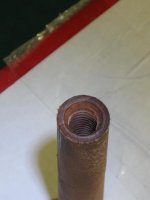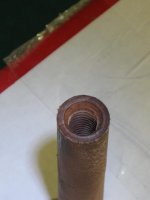I see other cue makers putting on a piloted joint. My question is ....WHY?? Does it actually have a value? A flat faced joint seems to work just fine. All the piloted joints I have seen have been 5/16-18 with a brass insert in the shaft. It seems that the brass insert is just left sticking out with epoxy or wood or both under the ring on the top of the insert. It looks ugly.... (my opinion and thoughts).............. personally, I see no value.
anyone want to beat me up ???? LOL
Kim
anyone want to beat me up ???? LOL
Kim





